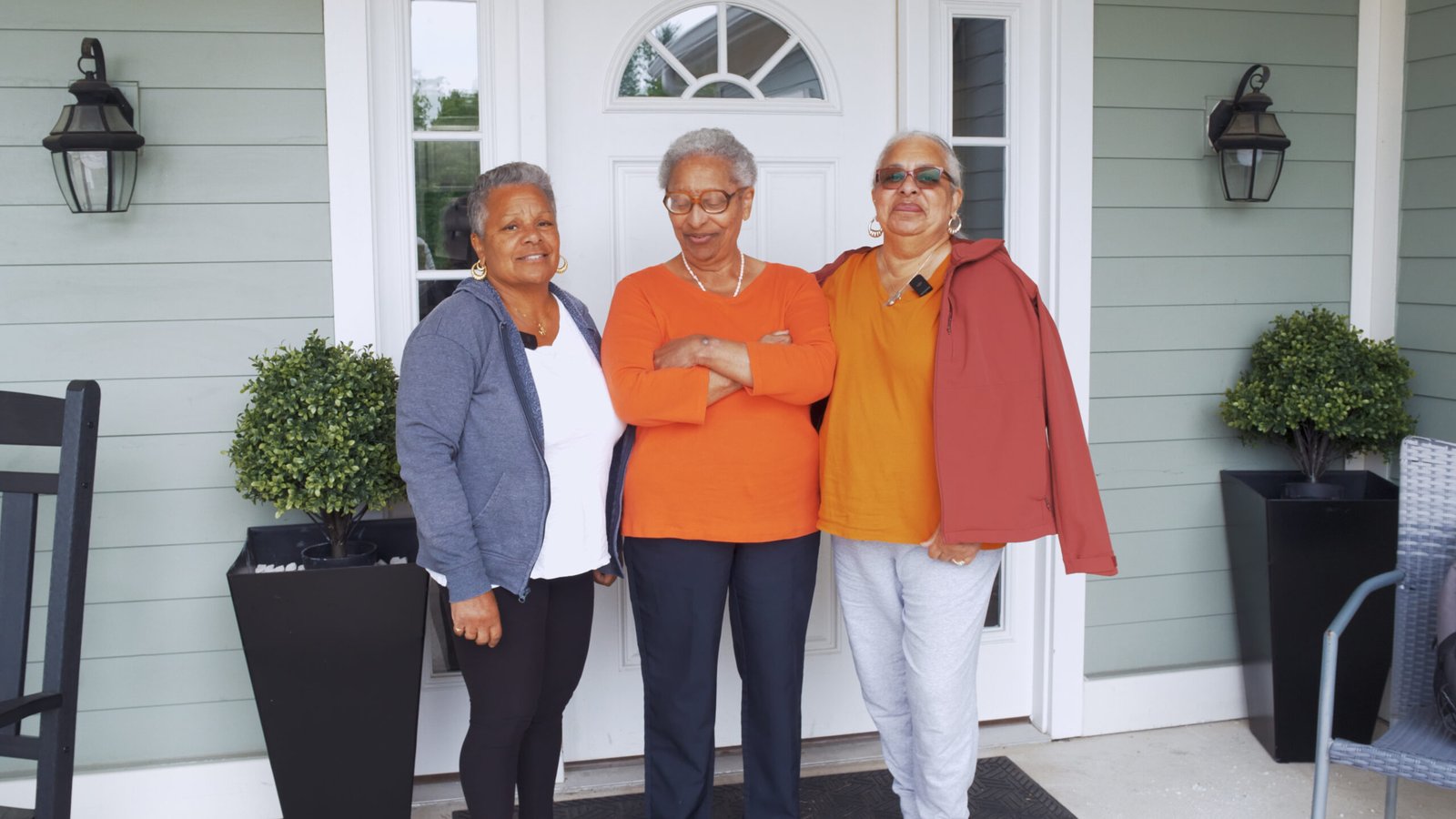Caring for an elderly parent is both rewarding and challenging, often leaving caregivers exhausted and anxious about finding reliable support. In the vibrant communities of Lebanon, families are constantly seeking solutions that offer peace of mind while ensuring their loved ones receive professional and compassionate care.
Residential respite care in Lebanon addresses this pressing need by providing short-term relief for primary caregivers through comprehensive and specialized services. From personal assistance to medical monitoring, these facilities promise a supportive environment where residents thrive even during their temporary stay. After thorough research and careful consideration, we’ve gathered all the necessary information to guide you in making an informed decision about which service best suits your family’s needs.
What is residential respite care?
Caregivers who need temporary relief from tending to their elderly family members can find it in residential respite care. It provides a safe and supportive environment for elderly individuals, ensuring they receive the necessary care and attention while their primary caregivers take a break.
The purpose of this service is to offer a short-term break for the primary caregiver, allowing them to address personal matters, rest, or attend to other responsibilities without the worry of leaving their loved one unattended. Take breaks and take care of yourself so you can keep providing quality care.
The facilities that offer residential respite care are equipped to handle various levels of medical and personal care, ensuring that all needs are met during the stay. From assistance with daily activities such as bathing, dressing, and eating to more complex health care requirements, these facilities strive to provide compassionate and comprehensive support for every resident.
Residential respite care provides a crucial lifeline for caregivers, offering them peace of mind knowing that their loved one is in capable hands while they take a well-deserved break. Some may argue that it’s unnecessary to seek temporary care for an elderly loved one, but it’s important to remember that everyone needs a break sometimes. Providing live-in care for an elder can be physically and emotionally demanding, and taking time off ensures the caregiver’s well-being too.
Overall, residential respite care offers a valuable solution for caregivers balancing multiple responsibilities. It’s a way to ensure both the caregiver and their loved one receive the support they need, helping maintain a healthy balance in caregiving dynamics.
With an understanding of the importance and benefits of residential respite care, let’s now explore the array of services available specifically in Lebanon to cater to the unique needs of elderly individuals.
Services Available in Lebanon
When considering residential respite care in Lebanon, understanding the comprehensive range of services offered is crucial to ensuring the well-being and comfort of elderly individuals. The supportive services go far beyond just accommodation and basic care, aiming to provide a nurturing environment that caters to each resident’s unique needs.
One of the most critical aspects of respite care is personal care assistance—essential support with daily activities such as bathing, dressing, and grooming. This vital assistance allows residents to maintain their hygiene and personal comfort, fostering a sense of independence despite any physical limitations they may be facing.
Moreover, medical monitoring plays a pivotal role in ensuring the residents’ ongoing well-being, including regular health checks, medication administration, and coordination with healthcare providers for any ongoing treatments. Caregivers meticulously maintain records and closely monitor any changes in health to promptly address any concerns.
Residents experience balanced and nutritious meals tailored to meet their specific dietary needs. With three nutritious meals provided daily, residents can savor delicious food that supports their overall health and well-being.
While physical health is crucial, mental stimulation and social engagement are equally important. We organize structured recreational activities like arts and crafts, exercise classes, and social events to keep residents engaged and active, fostering social connections and a sense of fulfillment.
Specialized memory care programs are available for those dealing with dementia or Alzheimer’s. These programs focus on cognitive stimulation and memory retention, offering customized support to assist residents in maintaining their sense of self and dignity, even in the face of cognitive challenges.
Understanding the extensive range of supportive services available in Lebanon sheds light on the holistic approach undertaken to ensure the comfort, well-being, and quality of life for elderly individuals requiring respite care.
Let’s look at the level of care that the devoted staff offers now that we are aware of the extensive supportive services that residential respite care facilities in Lebanon offer.
Quality of Care and Staff
Staff expertise and attention level directly influence the quality of care at residential respite facilities. This means that having a well-qualified team is essential for ensuring the well-being and comfort of residents. Optimized Senior Living, for instance, is known for its commitment to maintaining a low staff-to-resident ratio. This approach allows the staff to offer personalized attention, which is crucial for meeting each resident’s specific needs.
Certified Nursing Assistants (CNAs) play a critical role in providing day-to-day care to residents with various needs. They receive specialized training in elderly care, equipping them with the skills needed to assist with daily activities, personal care, and mobility support. Additionally, licensed nurses frequently supervise and provide medical expertise to CNAs, fostering a holistic environment for caregiving.
It’s important to note that these caregivers undergo continuous training to stay current with best practices and advancements in senior care. Ongoing education helps them adapt to evolving standards and techniques in caregiving, ensuring that residents receive the highest quality of care throughout their stay.
Consider a resident who requires assistance with daily tasks due to limited mobility. A well-trained CNA can provide physical support while also understanding and addressing the resident’s emotional and social needs. Having a skilled and compassionate team dedicated to each resident’s well-being enables this level of personalized care.
Furthermore, regular staff training programs allow for the implementation of new care protocols and methodologies as they emerge. As a result, residents benefit from up-to-date and evidence-based practices tailored to their individual requirements.
In essence, the quality of residential respite care facilities depends on the staff’s competency and ability to cater to residents’ diverse needs. The investment in maintaining a qualified and engaged caregiving team directly contributes to the enhanced well-being and comfort of the individuals under their care.
Benefits for Families and the Elderly
When a family member becomes the primary caregiver for an elderly loved one, it’s a significant responsibility that often comes with considerable stress and pressure. Residential respite care offers a much-needed break for these caregivers, allowing them to recharge and prevent burnout. Taking time away from caregiving responsibilities can vastly improve their mental well-being, making them better equipped to provide effective care in the long run.
It’s crucial for family caregivers to remember that taking care of themselves ultimately enhances their ability to provide better care for their loved ones. Respite care benefits not only the primary caregiver but also the elderly family member by creating a supportive and long-lasting environment for caregiving.
Imagine being able to take a short vacation or even just having dedicated time for your own hobbies and interests. This rejuvenation enables caregivers to return to their roles with renewed energy and enthusiasm, ultimately improving their quality of life and caregiving effectiveness.
Moving on from relief for caregivers, let’s explore another significant benefit: social interaction.
For elderly residents, the opportunity to interact with peers is invaluable. Respite care offers a setting where they can connect with others of similar age and experience, reducing feelings of loneliness and isolation that are often associated with aging. Social interaction is incredibly important for mental health and well-being, and residential respite care provides an environment where this interaction can naturally occur on a daily basis.
Regular interaction with others not only helps combat feelings of loneliness but also encourages engagement, new friendships, and a sense of belonging. These positive social interactions contribute positively to the overall mood, mental clarity, and emotional well-being in elderly individuals, enhancing their overall quality of life.
Consider how engaging in group activities, sharing meals in a communal dining area, or simply conversing with fellow residents can brighten someone’s day and make them feel connected and valued within the community.
Moreover, trained staff members at respite care facilities understand the importance of fostering these social connections among residents and strive to create an inclusive environment where everyone feels welcome and engaged. This support contributes significantly to the residents’ overall happiness and satisfaction.
Now that we’ve explored the positive impact of social interaction, let’s shift our focus to the professional care provided at residential respite facilities.
Choosing the Right Provider
Deciding to arrange residential respite care for a loved one is a significant step, and finding the right provider becomes pivotal in ensuring their comfort, safety, and well-being. As you embark on this important journey, consider these key factors to guide you towards selecting a provider that can offer a nurturing and supportive environment.
Evaluate services and amenities.
When visiting potential facilities, note not just the range of services and amenities offered but also the atmosphere and overall cleanliness. Pay attention to the condition of living spaces, communal areas, and outdoor spaces. These visual cues can provide insights into the quality of life and care your loved one can expect in their temporary residence.
Staff Credentials
A crucial element in choosing a residential respite care provider is understanding the qualifications, experience, and ongoing training programs of the staff. Inquire about their background and expertise in providing care for elderly individuals, especially those with specific health or personal care needs. Ongoing training programs indicate an institution’s commitment to maintaining high care standards and adapting to evolving caregiving practices.
Consider special needs.
Make sure the facility can adequately meet your loved one’s specific health or personal care needs. Inquire about specialized care programs and any adaptive measures available to provide personalized support.
By carefully evaluating services, staff credentials, testimonials, and special needs, you’re setting a strong foundation for identifying a residential respite care provider that aligns with your loved one’s unique requirements. This diligent approach will ultimately contribute to their comfort, safety, and peace of mind during their stay.
At Optimized Senior Living, we understand the challenges caregivers face and the importance of providing high-quality respite care. Our dedicated staff is committed to offering personalized, compassionate care tailored to each resident’s unique needs. Don’t wait until you’re overwhelmed—take a step towards better care for your loved one and peace of mind for yourself.
Contact Optimized Senior Living today to schedule a tour and discover how we can support your family’s needs. Your loved one deserves the best care, and you deserve peace of mind knowing they are in good hands.










